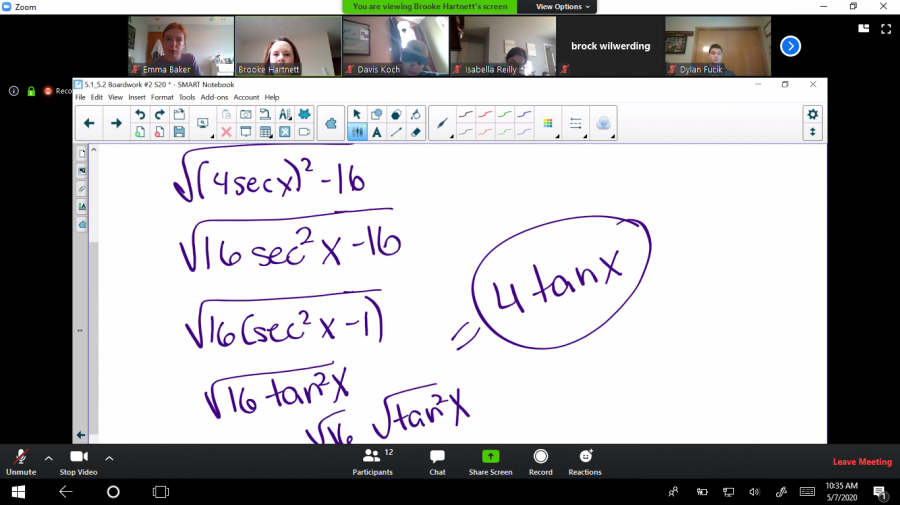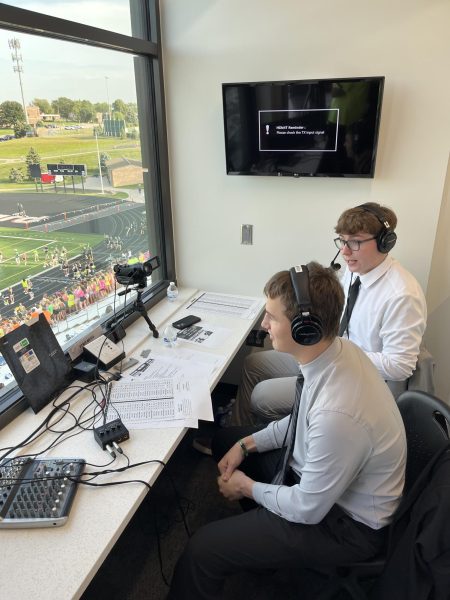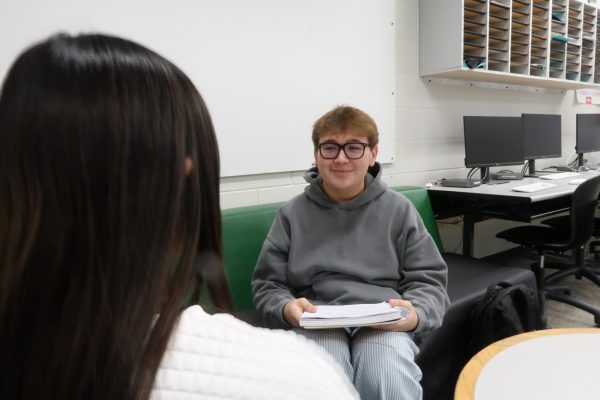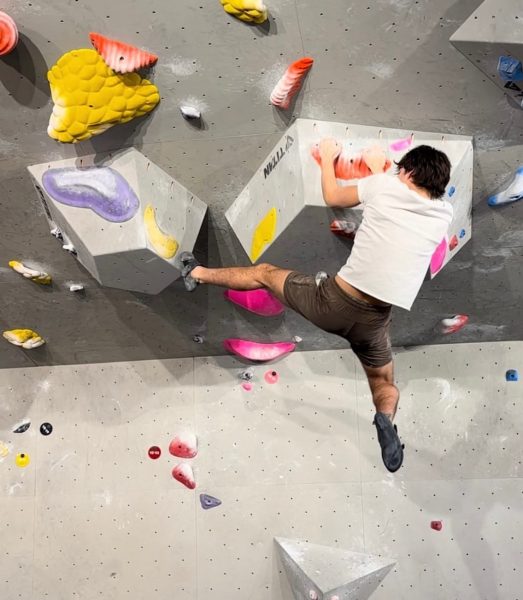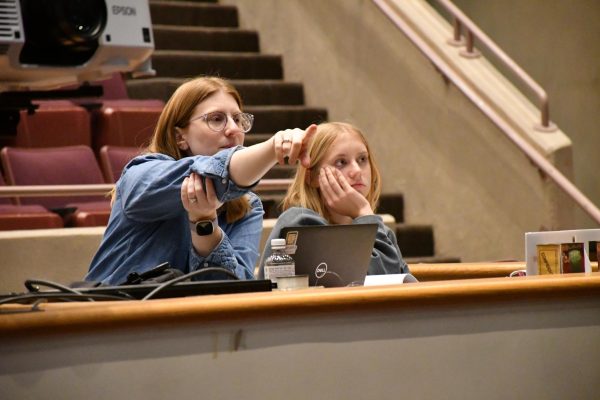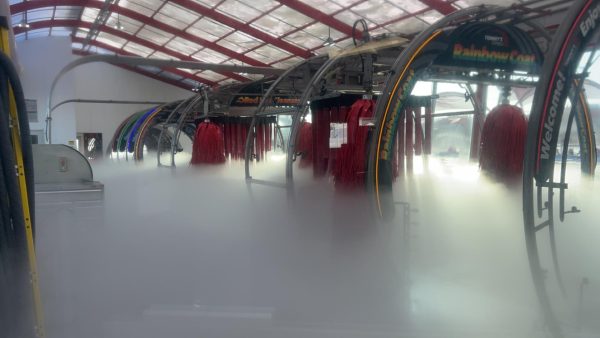An education enigma
Appreciating teachers as they adapt to change
Millard West math teacher Brooke Hartnett reviews with her students on Zoom before their quiz. She has explored many new digital tools, like a program called Formative, during her time teaching online. Although she acknowledges that it’s great to bring back new things to the classroom, she misses her students. “I miss interacting with my colleagues and students,” Hartnett said. “I really miss the feedback I can get from the facial expressions and body language of my students when I’m teaching. It is very difficult to gauge their level of understanding without that.”
May 8, 2020
The end of the school year is upon us which usually means final grades, graduations, goodbyes and good lucks. And, although bittersweet, those in-school moments give students, teachers and staff that little bit of closure to keep them fulfilled. However, in the era of COVID-19, closure is elusive. For one population—the teachers—that fact is hitting harder than ever.
The Millard Public School’s district has 35 schools, resulting in hundreds of teachers from elementary schools, middle schools and high schools having to shift from the traditional classroom setting to remote, online learning. With the end of the school year approaching and National Teacher Appreciation Week at hand, it’s time we stepped into their lives during these trying times.
“We really did not know how long we would be in quarantine at first, so I just played it by ear,” veteran Beadle Middle School science teacher Nancy Brummel said. “When it became evident that it was a long term situation, I started listening to my own rhythms and carved out a modified schedule for myself.”
She found a balance in organizing her Zoom classes on Tuesdays and Thursdays and planning for class—or even some miniature architecture—on the off days.
“My grandchildren need a place to play on the other days, so I take care of them,” Brummel said. “I have built more Lego sets than I ever thought possible.”
It may seem easy enough, but that’s only the half of it. While what they are sending home may not be as intensive, much planning, preparation and readjusting has to happen. For the younger children especially it has been hard to find the best combination of ease, engagement and quality education.
“The first two weeks were nonstop,” Reeder Elementary first grade teacher Michelle Whisler said. “The biggest part of e-learning has been the troubleshooting with technology and getting parents to be able to do as much as their children can. I send out a week of lesson plans on Sunday so my parents know exactly what my kids are going to do. Consistency is what helps children succeed, and it is hard when they don’t have that.”
Sometimes, it is the student’s consistency to even show up to class that takes a toll on not only their grades but their teachers as well.
“It has been very difficult to keep some students motivated, and it is frustrating because I have very little control in this setting,” Millard West math teacher Brooke Hartnett said. “If I notice a student is not keeping up with the material, I email the student and/or the parent. Sometimes they reply, and sometimes they do not. That is really hard because I want all of my students to be successful, but many are struggling to hold themselves accountable.”
Beyond contacting students and parents, Hartnett records lesson videos, posts worksheets and answer keys, grades assignments, holds class Zooms two to three times a week and collaborates with colleagues. She does this all while managing her own home life and helping her kids with their classwork. After 10 p.m., when her kids are in bed, she continues her work. For Whisler, she wakes up just a few hours later to start her busy days.
“Oftentimes, I will be up at five o’clock in the morning, getting up, working out and taking care of my family,” Whisler said. “I have a little boy, a husband and a dog that’s glued to me nonstop. It’s hard to be like ‘Oh, mommy needs to go do this right now,’ but then he is upstairs struggling with a math lesson. There are some nights where I am honestly working until nine o’clock because I have to be on Seesaw checking their work.”
While many teachers are missing sleep schedules, they also miss the traditional curriculum they get to teach. Subjects such as Chemistry are hard to instruct from home. Not being able to have kids get hands-on in experiments and demonstrations has made students and teachers alike feel heartbroken.
“We start a whole new curriculum next year, so everything I have developed over the last 20 years will be obsolete,” Brummel said. “Some of my all-time favorite labs will be gone forever.”
Along with the labs goes the chances to interact with others and maintain social connections. Whisler holds Zooms twice a week, but she doesn’t teach them anything during their sessions or even guide the conversations. She just wants the kids to talk with each other and with her. It gives them a sense of socialization and normalcy in a nothing but normal world.
“They write me little notes all the time,” Whisler said. “‘I miss you. I hate this.’ When you are little like that, yes academics are important, but it’s about those relationships and learning what life is about.”
For the teachers, this time has marked a significant period of change. As many plan to bring more digital tools back to the classroom next year, the district pledges to make sure all students k-12 will have access to an electronic device. It’s a decision made from our current eye-opening situation. Some teachers are hoping this will guide people higher up in the education system to really re-evaluate what matters in terms of testing, curriculum and more to invoke positive change in the lives of both students and teachers.

